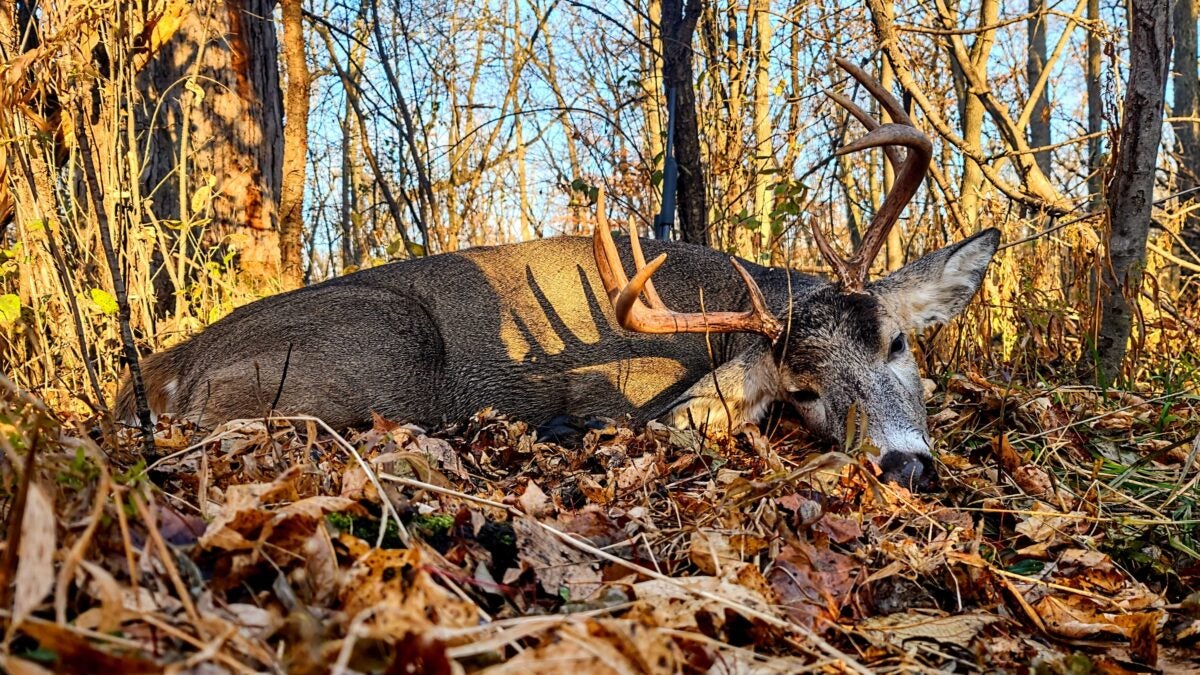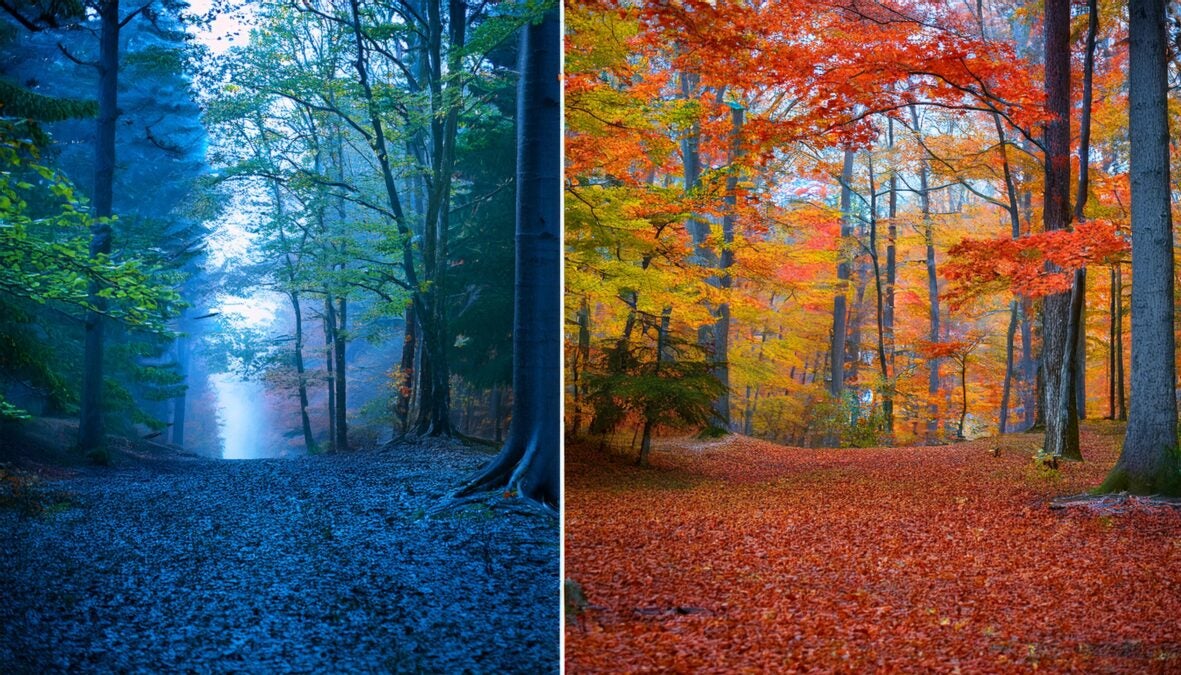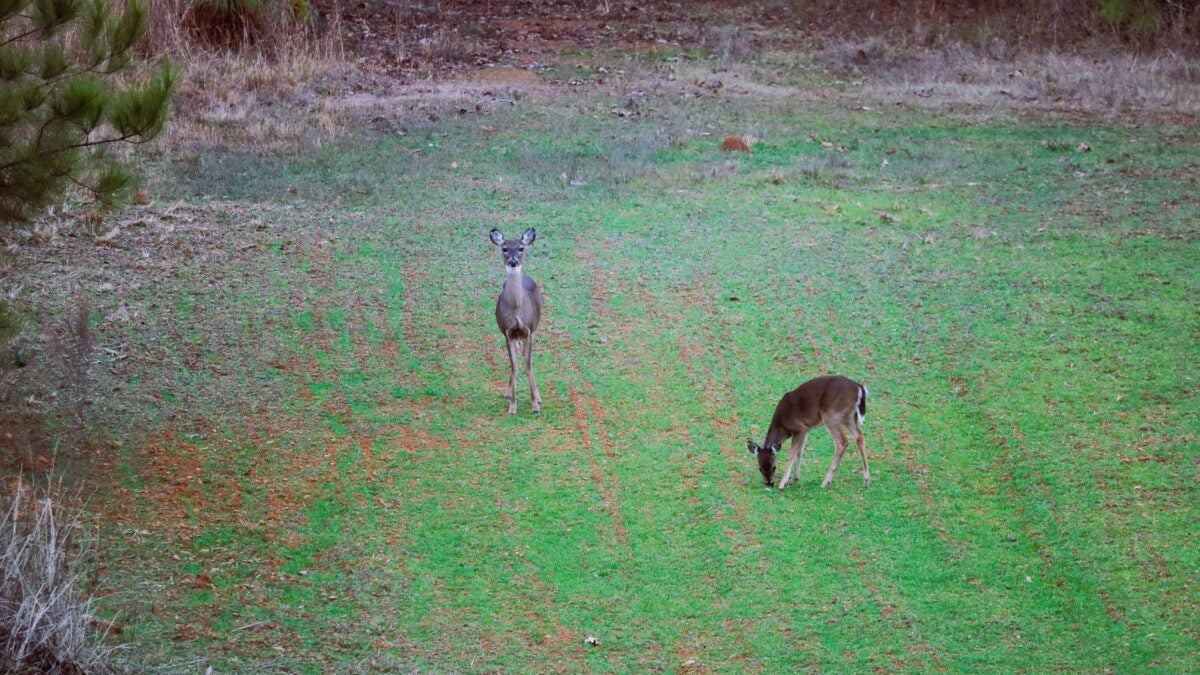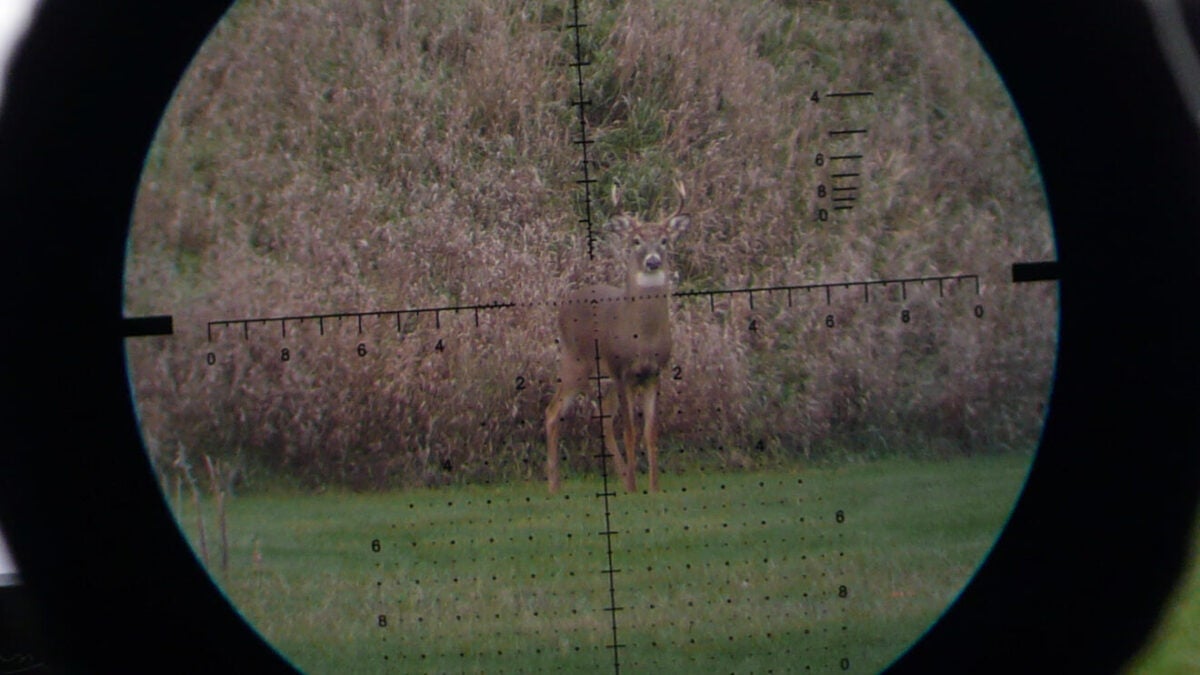To many hunters and wildlife enthusiasts, understanding what colors can deer see isn’t just a matter of curiosity – it’s crucial knowledge that can make or break your success in the field. While humans enjoy full-color vision spanning the rainbow, deer see the world quite differently. Today, I’m going to break down exactly how deer perceive colors, what this means for hunters and wildlife observers, and why these differences matter in practical terms.
Note: This article takes a look at “deer” in the species sense. It does not apply to all or one specific deer. This is to be used as a broad cheat sheet.
Deer Hunting Coverage on AllOutdoor
- Minnesota Deer Hunting Season: Regulations and What You Need to Know
- Whitetail vs Mule Deer: How to Tell Them Apart in the Wild
- Is .30-30 Win Good For Deer Hunting?
- The State of Chronic Wasting Disease in U.S. Deer
- AO Review: The Best Shotguns for Deer Hunting in 2024
How Deer Vision Works: The Basics
First things first, deer vision is fundamentally different from human vision at a structural level. While humans have three types of cone cells in their retinas (allowing us to see red, green, and blue), deer only have two types. This makes them what scientists call “dichromats,” and it dramatically affects how they perceive the world around them.
Quick Facts:
- Deer have two types of cone cells (humans have three)
- They see blues and greens exceptionally well
- Cannot distinguish red or orange colors
- Their night vision is 20x better than humans
- They have nearly 300-degree field of view
Deer Eye Structure: Built Different
The deer’s eye is specifically adapted for their survival needs. Their retinas contain a high concentration of rod cells, which are responsible for light detection and movement perception. These rod cells significantly outnumber their cone cells, which handle color vision. This ratio makes perfect sense when you consider that detecting predator movement in low light conditions was historically more important for deer survival than distinguishing between subtle color variations.
In comparison to human eyes, deer eyes are:
- Larger in proportion to their head size
- Positioned more to the sides of their head
- Containing fewer cone cells but more rod cells
- Optimized for detecting movement rather than detail

What Colors Can Deer See?
Colors Deer Can See Clearly
Deer excel at perceiving blues and greens, which makes evolutionary sense given their natural habitat. Their ability to see these colors includes:
- Blues: Deer can see blue colors extremely well, even better than humans in some cases. They’re particularly sensitive to shorter wavelengths of light, including blue and even ultraviolet (UV) light.
- Greens: Given that their survival depends on finding food in vegetation, deer have developed an excellent perception of green wavelengths.
- UV Light: Unlike humans, deer can see some ultraviolet light, which helps them see better in dawn and dusk conditions.

Colors Deer Struggle to See
Here’s where things get interesting for hunters and wildlife observers. Deer have significant difficulty seeing:
- Reds: Deer lack the cone cells necessary to perceive red wavelengths
- Oranges: Similar to red, orange appears as a grayish color to deer
- Browns: These appear as varying shades of gray
This explains why hunter orange is so effective – it’s highly visible to other hunters but appears as a neutral gray to deer.
Deer Night Vision Capabilities
One area where deer absolutely outshine humans is in their night vision capabilities. Thanks to their abundance of rod cells, larger eyes, and a special reflective layer called the tapetum lucidum, deer can see remarkably well in low-light conditions.
How Well Do Deer See at Night?
To put things in perspective:
- Deer can see about 20 times better than humans in low-light conditions
- They can detect movement in near-total darkness
- Their eyes gather roughly 50% more light than human eyes
- They can see clearly in light conditions that would leave us practically blind
Factors Affecting Deer Vision
Movement Detection: Their Secret Weapon
What deer lack in color perception, they make up for in movement detection. Their eyes are specifically designed to notice even the slightest motion, which is why:
- Stationary hunters are often more successful than those who are on the move
- Deer can spot a hunter shifting position at impressive distances
- Even slight movements like raising a bow or gun can alert them

Field of View and Depth Perception
Deer possess an impressive nearly 300-degree field of view, thanks to their eye positioning. This comes with some trade-offs:
- Wide field of view for detecting danger
- Limited binocular vision (where both eyes overlap)
- Poorer depth perception than humans
- The small blind spot directly behind them
Practical Applications for Hunters and Wildlife Observers
Understanding deer color vision has direct practical applications:
- Wear blue-blocking camo: Since deer see blue particularly well, avoid wearing blue clothing
- Use hunter orange freely: It’s safe and effective since deer see it as gray
- Stay still: Movement matters more than color to deer
- Consider UV-blocking sprays: These can help reduce visibility of clothing and gear
Conclusion: What Colors Can Deer See?
Understanding how deer see colors isn’t just fascinating – it’s practical knowledge that can significantly impact your success in the field. While deer may not see the world in the same vivid colors we do, their vision is perfectly adapted to their needs, excelling in movement detection and low-light conditions. By understanding these differences, we can better appreciate these remarkable animals and improve our chances of successful observation or hunting. Remember, deer vision is just one piece of their sensory puzzle – they also have excellent hearing and smell capabilities that complement their unique visual abilities. By taking all these factors into account, you’ll be better equipped for any deer-related outdoor activities.

The post What Colors Can Deer See? Unraveling the Mystery of Cervine Vision appeared first on AllOutdoor.com.
